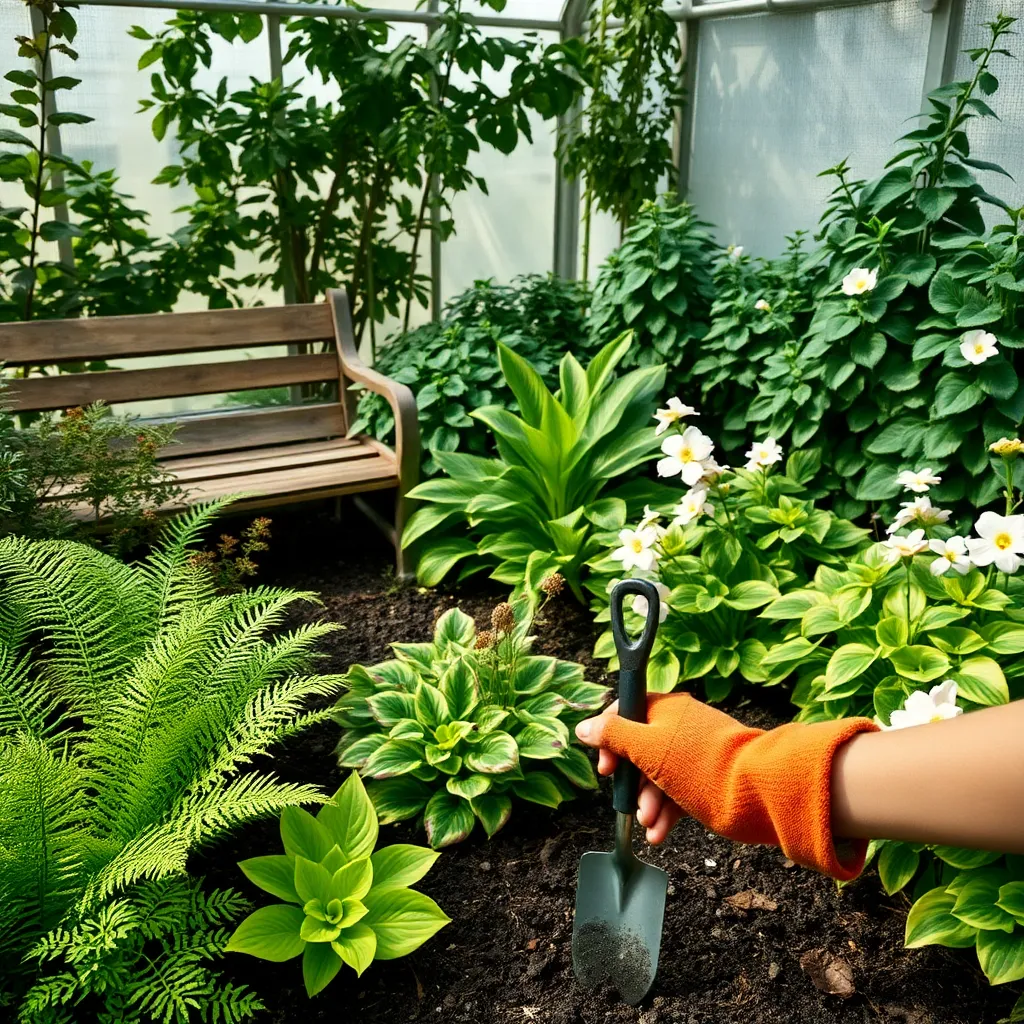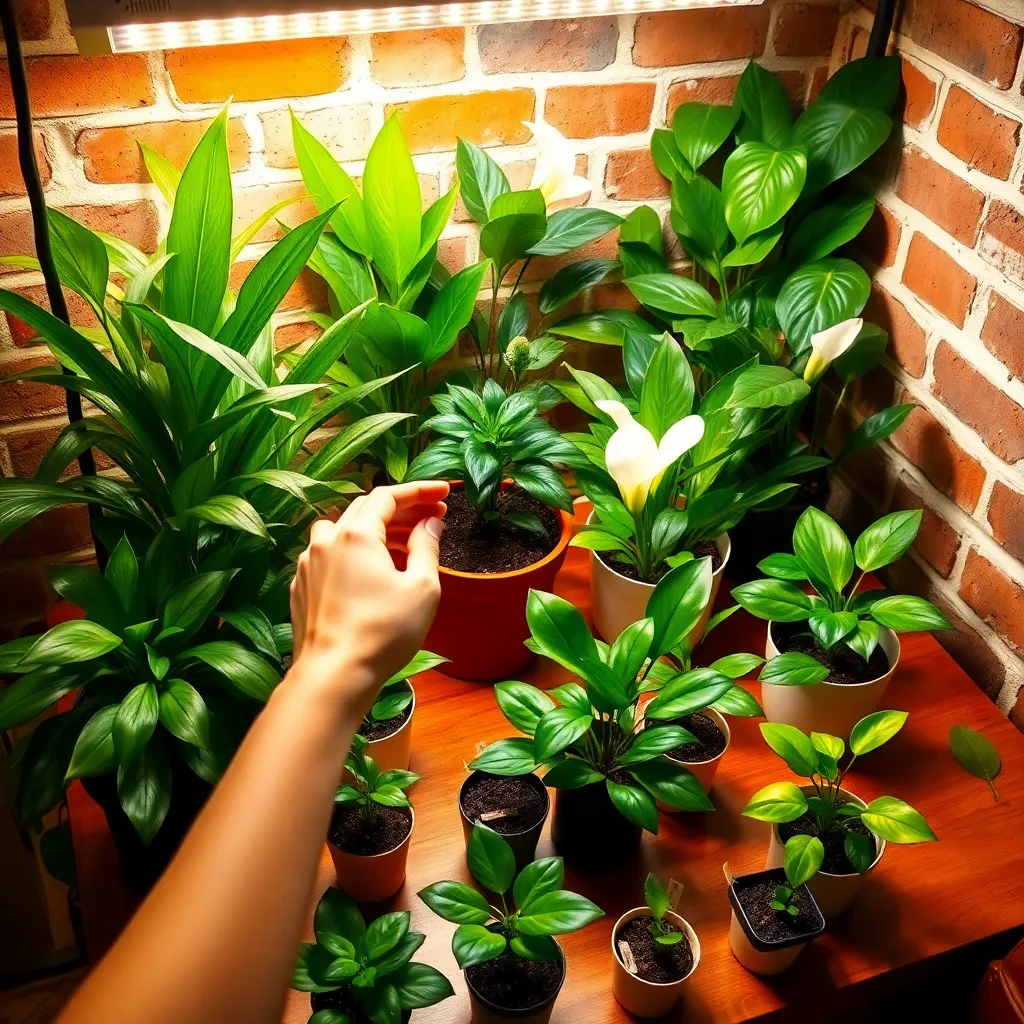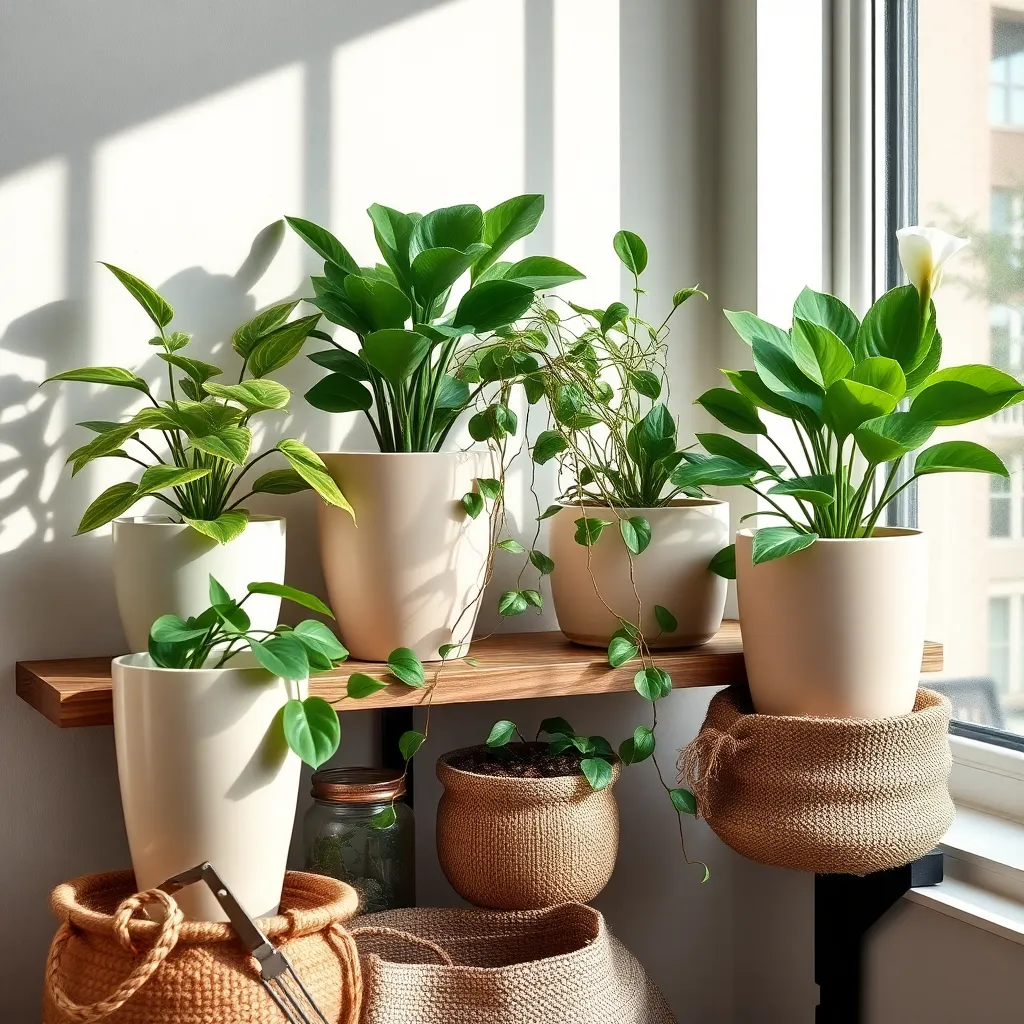Welcome to “Low-Light Gardening Tips,” where the magic of gardening unfolds even in the shadows! Whether you’re a budding enthusiast or a seasoned green thumb, this guide invites you to explore and delight in the hidden potential of low-light spaces. Cultivating a thriving garden doesn’t always require abundant sunlight, and here, you’ll discover how a touch of creativity and the right plant choices can transform dim corners into lush, verdant havens.
In this guide, you’ll find a treasure trove of practical tips and insights tailored to help you succeed, regardless of your experience level. From understanding the unique needs of shade-loving plants to designing spaces that maximize beauty and functionality, we’ve got you covered. With each page, you’ll gain the confidence to create a garden that not only survives but flourishes, bringing joy and tranquility to your daily life. Embrace the challenge, and let the adventure of low-light gardening inspire you to cultivate your own oasis of greenery and calm.
Choose Shade-Tolerant Plant Varieties

When gardening in low-light environments, it’s crucial to select plants that thrive in shade. Some excellent options for shade-tolerant plants include ferns, hostas, and Astilbe, which are known for their ability to flourish with minimal sunlight.
For a successful shade garden, consider the soil quality—ensure it’s well-draining yet retains moisture. Adding organic matter like compost can enhance soil structure and provide the nutrients shade plants need to thrive.
Watering is another key factor; shade-tolerant plants generally need less frequent watering than their sun-loving counterparts. However, it’s important to maintain consistent soil moisture, especially during dry spells, to prevent stress and encourage healthy growth.
Advanced gardeners might experiment with layering different plant heights to create depth and interest in a shade garden. By placing taller plants like hydrangeas at the back and shorter ones like creeping Jenny at the front, you can create a lush, visually appealing landscape.
Use Reflective Surfaces Strategically

To make the most of low-light areas, consider using reflective surfaces to amplify available light. Strategically placing mirrors or reflective materials can significantly enhance the brightness around your plants, allowing them to thrive even in dim conditions.
Position mirrors directly opposite windows or light sources to bounce natural light deeper into the room. Ensure mirrors are placed at an angle that redirects the light effectively across your plants, avoiding any harsh, direct glare that might harm delicate foliage.
Aluminum foil or white-painted surfaces can also serve as inexpensive and effective reflectors for improving light distribution. Place these reflective materials on walls, under shelves, or behind plants to maximize the amount of light they receive.
For outdoor gardens with dense foliage, try using water features like small ponds or birdbaths to reflect sunlight onto shaded areas. These not only increase light but also add aesthetic value and attract beneficial wildlife to your garden, enhancing its ecosystem.
Rotate Plants for Even Growth

To ensure even growth in low-light conditions, it’s important to rotate your plants regularly. By turning your plants a quarter turn every week, you help each side receive equal exposure to available light, preventing one side from becoming spindly or pale.
Consider marking your pots with a small dot to remind you where the last rotation started. This simple trick can significantly enhance plant symmetry and overall health, especially for larger leafy plants like the Peace Lily or Rubber Plant.
For beginners, setting a reminder on your phone every seven days can help maintain a consistent rotation schedule. Advanced gardeners might experiment with rotating plants more frequently if they notice uneven light distribution in their specific environment.
Keep an eye on the direction of your light source and adjust as needed, particularly during seasonal changes. Understanding how light moves through your space can assist in determining the best rotation frequency, ensuring that your plants thrive even in challenging low-light conditions.
Utilize Grow Lights for Boost

One way to enhance your low-light gardening efforts is by incorporating grow lights. These lights are especially useful during the winter months when natural sunlight is limited.
Choose LED grow lights for their energy efficiency and low heat output, making them safe for your plants. They can be set up easily in tight spaces like apartments or small indoor gardens.
Position your grow lights about 6 to 12 inches above the plants to mimic natural sunlight. Adjust the height as your plants grow, ensuring they receive optimal light exposure without overheating.
Consider using a timer to automate the lighting schedule, providing your plants with 12 to 16 hours of light daily. This consistency can significantly boost growth, helping plants to thrive even in low-light conditions.
For those looking to delve deeper, experiment with different light spectrums to enhance specific phases of plant growth. Blue light encourages vegetative growth, while red light supports flowering and fruiting.
Incorporate Light-Colored Planters

To make the most of low-light areas in your garden, consider using light-colored planters. Light-colored surfaces reflect more light, which can help distribute available light more evenly to your plants. This is especially beneficial in indoor spaces or shaded outdoor areas where natural light is limited.
Choosing the right material for these planters is equally important. Opt for materials such as ceramic or light-colored plastic, as they not only reflect light but also retain moisture well. This feature is crucial in low-light conditions where evaporation is generally slower, helping to maintain a consistent moisture level for your plants.
For beginners, starting with small to medium-sized planters is a practical choice. These sizes offer enough room for the roots to grow without overwhelming the limited light resources. Advanced gardeners can experiment with positioning their planters strategically to maximize light reflection, like placing them near mirrors or light-colored walls.
Consider using self-watering planters in your setup to maintain optimal soil moisture. These planters have a reservoir that allows plants to draw water as needed, ensuring they don’t dry out in the less intense light. This setup is particularly beneficial for moisture-loving plants such as ferns and peace lilies, which thrive in low-light environments.
Conclusion: Growing Success with These Plants
In exploring the enriching world of low-light gardening, we discovered five key relationship concepts that resonate beyond the garden. First, patience is vital, just as nurturing plants in dim conditions takes time. Second, adaptability allows us to adjust our care techniques to suit our partners’ unique needs. Third, communication is as essential as knowing when your plant needs water. Fourth, consistency in care fosters trust and growth, both for plants and relationships. Finally, resilience keeps us thriving amidst challenges, just like our greenery perseveres in less-than-ideal conditions.
As an immediate step, try to identify one area in your relationship that could benefit from these insights. Whether it’s enhancing communication or practicing patience, taking action today can sow the seeds for tomorrow’s growth.
Bookmark this article as a go-to resource for nurturing your relationships, just as you would tend to a beloved garden. Together, let’s cultivate relationships that flourish, no matter the light available. Remember, with every small action you take, you’re paving the way for a brighter, more harmonious future. Save this guide and revisit it whenever you need a reminder of how to nurture your connections with care and intention.
